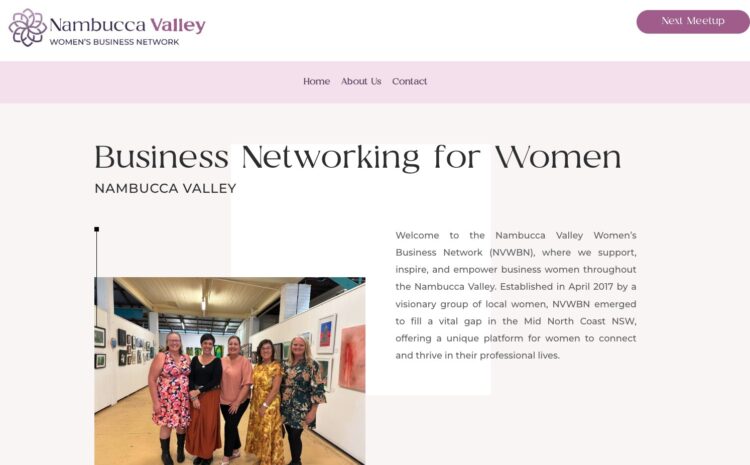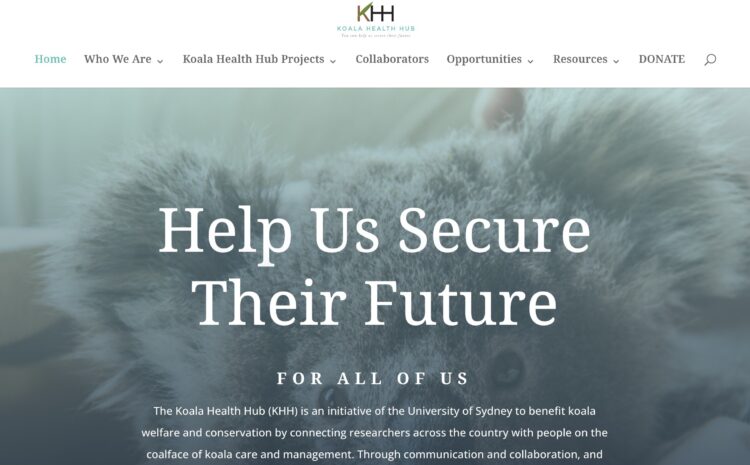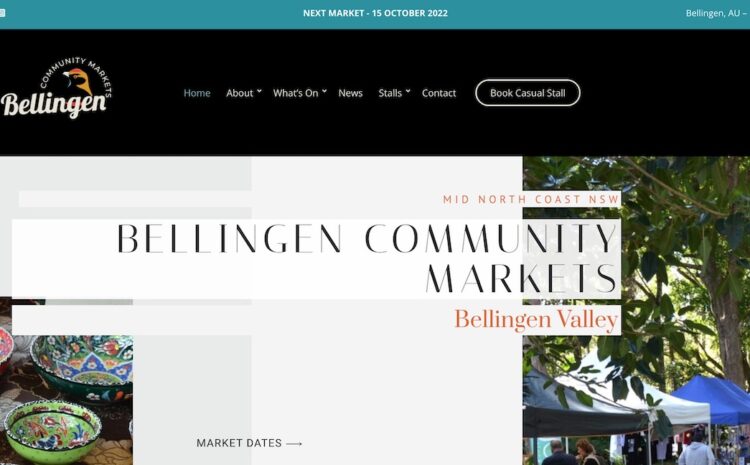5 Best Practices for Creating a Successful Nonprofit Website
Creating a successful nonprofit website is key to gaining visibility, attracting donors, and driving impact. In today’s digital age, having a strong online presence is crucial for any nonprofit organisation. But where do you start? In this article, we will explore five best practices that will help you create an engaging and effective website for your nonprofit.
First and foremost, your website should reflect your brand’s voice and mission. Consistency is key – make sure your site’s design, colors, and messaging align with your nonprofit’s identity. This will help establish trust with your audience and convey a sense of professionalism.
Secondly, prioritise user experience. Your website should be easy to navigate, visually appealing, and optimised for mobile devices. Users should be able to find the information they need quickly and easily. Incorporate clear calls-to-action and make your donation process as simple as possible.
Next, focus on creating compelling and shareable content. Use storytelling techniques to engage your audience and showcase the impact of your work. Incorporate visuals, videos, and testimonials to make your website more dynamic and engaging.
In addition, optimise your website for search engines. Conduct thorough keyword research and implement SEO strategies to improve your site’s visibility in search results. This will help drive organic traffic and increase your chances of attracting donors and supporters.
Lastly, regularly update and maintain your website. Keep your content fresh, provide regular updates on your projects and achievements, and make sure your website is secure and fast-loading.
By following these best practices, you can create a meaningful and impactful website that effectively communicates your nonprofit’s mission and drives engagement and support from your audience.
Importance of a nonprofit website
In the digital age, having a well-designed nonprofit website is no longer optional; it is essential. A website serves as the virtual face of your organisation, providing a platform to articulate your mission, share your story, and connect with your audience. For many potential donors, volunteers, and supporters, your website is their first impression of your organisation. A professional and informative site can build trust, credibility, and a sense of connection, which are all crucial for attracting investment in your cause. When visitors are met with a polished and engaging website, they are more likely to stay, explore, and take the next step towards support.
Moreover, a nonprofit website can significantly amplify your reach. It enables you to share your message beyond your immediate community, connecting with individuals across the globe who share your passion. Your online presence allows for the dissemination of information about your programs, initiatives, and impact stories, which can be shared through various channels, including social media and email campaigns. This increased visibility is vital for building a community of advocates who can further your mission through their networks, creating a ripple effect that expands your organisation’s influence and support base.
A well-structured nonprofit website also provides essential resources for your stakeholders. Whether it’s donors wanting to understand how their contributions will be utilised, volunteers looking for opportunities to get involved, or community members seeking assistance, having a centralised platform to access this information is invaluable. A user-friendly website with clear navigation and informative content ensures that all visitors can easily find what they are looking for, fostering a positive experience that encourages ongoing engagement with your organisation.
User-friendly design and navigation
When creating a nonprofit website, user-friendly design and navigation are fundamental elements that can make or break the user experience. A cluttered or confusing website can easily frustrate visitors, leading them to leave before they have had a chance to engage with your mission. Prioritising simplicity and clarity in your design can help ensure that users can easily navigate through your site and find the information they need. This means using intuitive layouts, clear menus, and logical categorisation of content that guides users seamlessly from one section to another.
In addition to a clean layout, incorporating visual hierarchy is essential for effective navigation. This includes using headings, subheadings, and bullet points to break up large blocks of text, making the content more digestible and appealing. Highlighting important information with contrasting colors or larger fonts can draw attention to key messages and calls to action. The overall goal is to create a website that feels easy to explore, where users can quickly identify what they are looking for without feeling overwhelmed by excessive information or distractions.
Another critical aspect of user-friendly design is ensuring accessibility for all users, including those with disabilities. Implementing features such as alt text for images, keyboard navigation, and screen reader compatibility can make your website more inclusive. By considering the diverse needs of your audience, you not only enhance their experience but also demonstrate your organisation’s commitment to serving everyone in your community. A user-friendly website fosters a welcoming environment that encourages visitors to engage with your cause and take action.
Clear and compelling messaging
Clear and compelling messaging is at the heart of an effective nonprofit website. Your mission statement should be prominently displayed, succinctly articulating the core purpose of your organisation. This clarity not only helps visitors quickly understand what your nonprofit stands for but also sets the tone for the rest of the content on your site. When your messaging is straightforward and resonates with your audience, it builds an emotional connection that can inspire them to get involved and support your cause.
In addition to a strong mission statement, it’s essential to communicate your impact effectively. This can be achieved through data, statistics, and success stories that demonstrate the tangible outcomes of your work. For instance, rather than merely stating that you provide meals to the homeless, share specific figures, such as how many meals you’ve distributed over the past year, or include testimonials from individuals whose lives have been positively affected by your programs. Such compelling narratives not only provide context but also create a sense of urgency and importance around your mission.
Furthermore, your website’s tone should reflect your organisation’s personality and values. Whether your approach is professional, friendly, or community-oriented, consistency in your messaging across all pages is crucial. This includes using the same language, terminology, and visual elements to reinforce your brand identity. When visitors see a cohesive message that aligns with their values, they are more likely to trust your organisation and feel motivated to engage with it further, whether through donations, volunteering, or spreading the word.
Engaging content and storytelling
Engaging content is a vital component of a successful nonprofit website. Storytelling is one of the most powerful tools at your disposal to captivate your audience and convey the importance of your work. By sharing real-life experiences and testimonials from those who have benefited from your services, you create a narrative that resonates with visitors on an emotional level. This connection can inspire empathy and motivate individuals to take action, whether by donating, volunteering, or advocating for your cause.
Incorporating various forms of media can also enhance the storytelling experience on your website. Videos, infographics, and photo galleries can make your content more dynamic and engaging, allowing visitors to see the impact of your work visually. For example, a short video showcasing a recent event or project can convey your organisation’s energy and commitment in a way that text alone may not achieve. By diversifying your content, you cater to different learning styles and preferences, making your message accessible to a broader audience.
Moreover, regularly updating your content with fresh stories and achievements keeps your website lively and encourages repeat visits. This could include spotlighting recent volunteers, sharing updates on ongoing projects, or highlighting upcoming events. By communicating ongoing successes and challenges, you foster a sense of community and involvement among your supporters. Engaging content not only informs visitors but also invites them to become part of your journey, reinforcing their connection to your nonprofit and its mission.
Mobile optimisation and responsive design
As mobile internet usage continues to rise, ensuring that your nonprofit website is optimized for mobile devices is crucial. A responsive design adapts to different screen sizes, providing an optimal viewing experience for users regardless of whether they are on a smartphone, tablet, or desktop. If your website is not mobile-friendly, potential supporters may struggle to navigate or engage with your content, leading to frustration and a higher bounce rate. A seamless mobile experience is essential for retaining visitors and encouraging them to take action.
In addition to responsive design, it’s important to prioritise loading speed on mobile devices. Users expect fast-loading pages, and delays can lead to increased abandonment rates. Optimise images and streamline your website’s code to improve performance without sacrificing quality. Tools like Google PageSpeed Insights can help you identify areas for improvement and ensure that your site loads quickly, providing a positive user experience that encourages visitors to explore further.
Furthermore, consider the specific needs of mobile users when designing your site. For example, implement larger buttons and touch-friendly navigation to make it easier for users to click and scroll. Simplifying forms for mobile users can also enhance the donation process, allowing supporters to contribute effortlessly from their devices. By prioritising mobile optimisation, you not only accommodate a growing segment of users but also demonstrate your commitment to accessibility and convenience in connecting with your audience.
Donor and volunteer engagement features
Engaging donors and volunteers through your website is essential for building a supportive community around your nonprofit. Incorporating features that facilitate interaction can enhance their experience and encourage ongoing involvement. For instance, a dedicated volunteer portal can provide information on upcoming opportunities, training, and resources, making it easy for individuals to get involved. This portal can also include testimonials from current volunteers, showcasing their experiences and encouraging others to join.
Additionally, implementing donor management tools can streamline the contribution process and provide a personalised experience for supporters. Features like recurring donation options, donor recognition, and personalised thank-you messages can foster a sense of appreciation and loyalty. Providing donors with access to their giving history can also enhance transparency and trust, encouraging them to continue supporting your organisation.
Incorporating interactive elements, such as surveys or feedback forms, allows donors and volunteers to share their thoughts and experiences. This two-way communication fosters a sense of community and shows that you value their input. By actively engaging with your audience and providing them with opportunities to connect and share, you create a more vibrant and involved supporter base that is invested in your mission.
Integration with social media and email marketing
Integrating social media and email marketing into your nonprofit website can significantly enhance your outreach and engagement efforts. Social media platforms are powerful tools for spreading awareness about your organisation and its mission. By incorporating social sharing buttons on your website, you enable visitors to easily share your content with their networks, increasing your reach and visibility. Regularly updating your social media profiles with fresh content and linking back to your website can create a cohesive online presence that attracts new supporters.
Email marketing is another effective way to engage with your audience and keep them informed about your organisation’s activities. By including email sign-up forms on your website, you can build a mailing list of interested supporters. Regular newsletters can provide updates on your projects, success stories, and upcoming events, keeping your audience connected to your mission. Personalised emails can also enhance engagement, allowing you to tailor your messaging to different segments of your audience based on their interests and involvement.
Furthermore, consider using social media and email marketing to promote fundraising events and campaigns. Creating dedicated landing pages on your website for these initiatives can streamline the process and provide potential donors with all the information they need to contribute. By leveraging social media and email marketing alongside your website, you create a multi-faceted approach to reaching and engaging your audience, ultimately driving greater support for your nonprofit’s mission.
Donation and fundraising capabilities
A key objective of any nonprofit website is to facilitate donations and fundraising efforts. Incorporating an easy-to-use donation platform is crucial for converting visitors into supporters. Your donation page should be straightforward, with clear instructions and options for one-time or recurring contributions. Highlighting the impact of donations can further motivate visitors to give. For instance, specifying how a $50 donation can provide meals for families in need can create a tangible connection between their contribution and your organisation’s mission.
Additionally, integrating fundraising tools such as peer-to-peer fundraising campaigns can empower your supporters to become advocates for your cause. By allowing individuals to create their own fundraising pages and share them with their networks, you can expand your reach and engage new donors. Providing resources and support for these fundraisers, such as customisable templates and promotional materials, can enhance their success and foster a sense of community among your supporters.
Finally, ensuring that your donation process is secure and compliant with relevant regulations is essential for building trust with your audience. Displaying security badges and providing clear information about how donations will be used can reassure potential donors. By prioritising seamless donation and fundraising capabilities on your website, you not only make it easy for supporters to contribute but also enhance your organisation’s overall financial sustainability.
Regular website maintenance and updates
Maintaining and updating your nonprofit website is crucial for ensuring its effectiveness and relevance. Regularly refreshing your content keeps your site dynamic and engaging, encouraging visitors to return for the latest news and updates. This could include adding new blog posts, highlighting recent successes, or sharing upcoming events. An active website signals to your audience that your organisation is engaged and committed to its mission, fostering a sense of trust and reliability.
Additionally, regular maintenance is essential for the technical performance of your website. This includes monitoring for broken links, ensuring compatibility with various browsers and devices, and updating plugins or software as needed. A website that functions smoothly and efficiently enhances the user experience and minimises frustration for visitors. Implementing regular checks can help identify and resolve issues before they become significant problems, ensuring that your website remains a valuable resource for your supporters.
Finally, consider analyzing your website’s performance using analytics tools. This data can provide insights into visitor behaviour, helping you understand which content resonates most with your audience and where improvements may be needed. By regularly reviewing and adjusting your strategy based on this feedback, you can optimise your website for maximum impact and engagement, ensuring that it continues to serve your nonprofit’s goals effectively.
Conclusion
Creating a successful nonprofit website involves a multifaceted approach that prioritises user experience, clear messaging, engaging content, and effective fundraising capabilities. By implementing the best practices outlined in this article, organisations can establish a strong online presence that resonates with their audience and drives engagement. As the digital landscape continues to evolve, staying current with trends and technologies will ensure that your nonprofit remains relevant and impactful.
Remember that your website is more than just a digital brochure; it is a powerful tool for communication and community building. By reflecting your brand’s voice, showcasing your mission, and facilitating connections with donors and volunteers, your website can become a central hub for your organisation’s growth and success. Investing the time and resources into creating and maintaining an effective nonprofit website will pay dividends in the form of increased visibility, support, and ultimately, greater impact in your community.


